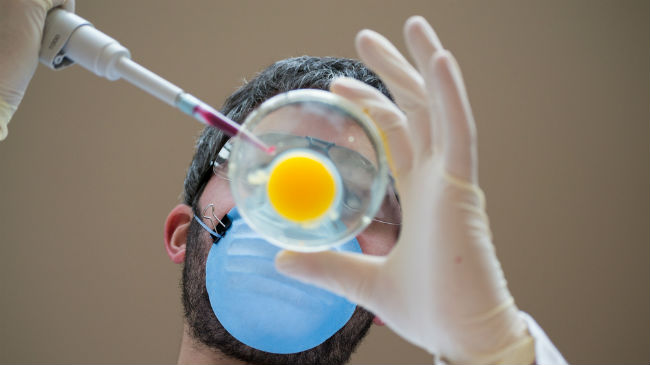
In the hierarchy of existential threats to humanity (at least in science fiction), the genetically engineered human race is close second to killer robots. Ever since Darwin was used to justify racism, people have been worried that as we exert more control over the human genome, we might become less than human ourselves. And now that a federal panel has cleared a powerful gene-editing tool called CRISPR cas-9 for use on humans, the debate is just going to rage harder. But we don’t need to worry about building monsters just yet.
What Is CRISPR Cas-9?
The short answer is that it’s a “gene editor,” in a way. CRISPR is short for clustered regularly interspaced short palindromic repeats, or, in layman’s terms, useless genetic crap. Or so we thought, until scientists realized CRISPR was a sort of key; if a virus attacks, the DNA unwinds and if it matches with CRISPR, Cas-9 comes along and cuts the whole strand loose to die. But it turns out you can do this with any part of the DNA strand and it works with any organism, including humans.
It’s easily the most precise gene editing tool we have so far, and in the four years we’ve had it, it’s opened the door to enormous advances in biology research. But, of course, since it works on humans, the question is should we use it?
The Ethics Of CRISPR
The federal decision, it’s important to note, is limited to somatic uses of CRISPR on humans. Instead of changing the human genome directly, researchers are being allowed to edit specific human cells. Specifically, what researchers at the University of Pennsylvania want to do is take the immune cells out of cancer patients, edit them to attack tumors, and reinsert them. Called cancer immunotherapy, we know the technique works, but it’s only been used as a last resort, in part because it’s risky. In recent trials, patients mostly made strong recoveries, but a handful died due to the side effects. So far, though, it’s only been done with blood cancers. How immunotherapy will work on tumors is up in the air.
That said, many believe it’s only a matter of time before somebody is genetically engineering humans, triggering a genetic “arms race.” A Chinese team claims to have already done it with human embryos, although those embryos weren’t brought to term. Even if we never edit the genome, though, there’s still the potential for abuse. Genetically engineered soldiers have, of course, been a worry. Still, that needs to be balanced against the ability to help.
When Do We Do Harm?
The real question, of course, is what’s the line between helping people and causing harm? One of the ongoing arguments in the medical field, for example, is how and whether to treat deafness. Is it a disability, as some argue, or is it simply a difference in human experience as advocates for deaf culture believe? How we define a genetic “defect” versus a simple variance in human existence is a tough question, especially once you realize that everything is a defect in the eyes of somebody. This tool could give us the potential to “outlaw” certain genes and combinations of genes, which is a terrifying prospect.
For now, of course, the tools are limited to helping. And it’s unlikely any changes that might make it into the wider gene pool will be approved for a long, long time. But we’ll need to have these conversations now, because sooner or later, the genetic Pandora’s Box is going to be opened.






